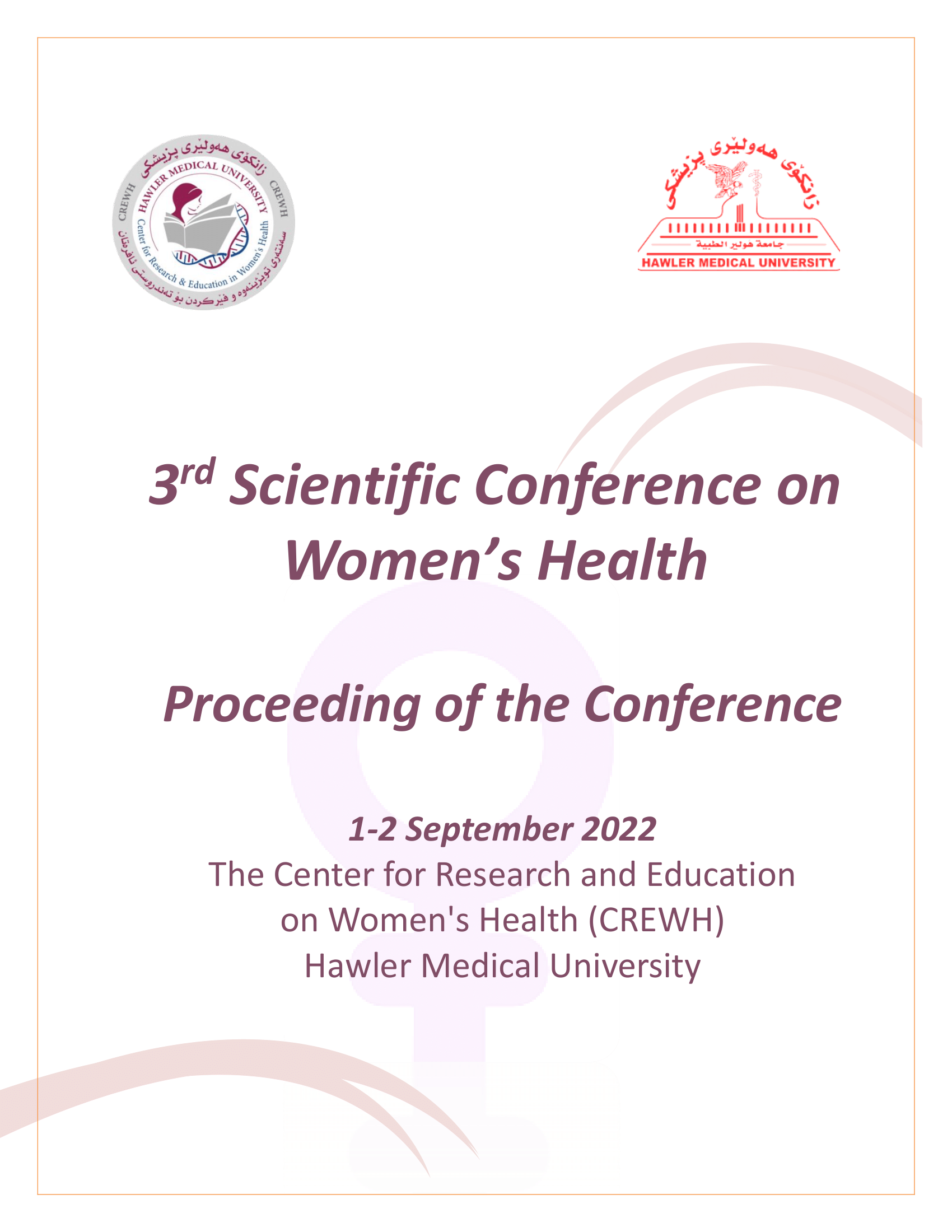Assessment of Knowledge and Expectations for ultrasound examination as a standard element of antenatal care among Pregnant Women in Iraq
DOI:
https://doi.org/10.15218/crewh.2022.02Keywords:
Knowledge, Ultrasound, Pregnant women, LearningAbstract
Background and objectives: The ultrasound scan is now a widely used technique in prenatal treatment. We attempted to assess pregnant women's knowledge and expectations regarding the use of ultrasonography during pregnancy in Iraq. To assess pregnant women's knowledge and expectations regarding the use of ultrasonography during pregnancy in Iraq.
Methods: We completed a cross-sectional survey of pregnant women seen in Azadi Teaching Hospital Sonography Department and private clinic in Iraq, Iraq. The data collection was conducted in May - June 2021. The study population Consists of all pregnant women that visit this Department for obstetric ultrasound Scans. Only pregnant women that came for obstetric scan were added in the study exclude other scans such as abdominal or renal scans. The final sample size was 81 participants.
Results: From the total 81 participants, table 3.1 shows that the majority of the pregnant mother was 51.9% younger than 30 years, 48.1% Older than 30 Years. In the same cases, 37% of pregnant women were in their 1st semester, 39.5% of pregnant women were in their 2nd semester and 23.5% of pregnant women were in their 3rd semester.
Conclusions: The study established that most of the participants are informed of the ultrasound scan. The subjects also believed that the procedure is safe and the main purpose for performing it is fetal wellbeing and viability.
References
Krishnamoorthy, N., Kasinathan, A., 2017. Knowledge and attitude regarding obstetric ultrasound among pregnant women: a cross sectional study. Int. J. Reprod. Contracept. Obstet. Gynecol. 5, 2192–2195. https://doi.org/10.18203/2320-1770.ijrcog20162091 2. Enakpene, C.A., Morhason-Bello, I.O., Marinho, A.O., Adedokun, B.O., Kalejaiye, A.O., Sogo, K., Gbadamosi, S.A., Awoyinka, B.S., Enabor, O.O., 2009. Clients’ reasons for prenatal ultrasonography in Ibadan, South West of Nigeria. BMC Womens Health 9, 12. https://doi.org/10.1186/1472-6874-9-12 3. Tole, N.M., Ostensen, H., World Health Organization, Department of Blood Safety and Clinical Technology, Team of Diagnostic Imaging and Laboratory Technology, World Health Organization, Department of Essential Health Technologies, World Health Organization, Health Technology and Pharmaceuticals, 2005. Basic physics of ultrasonographic imaging. World Health Organization, Geneva. 4. Nightingale, R., n.d. Ultrasound transducer | Radiology Reference Article | Radiopaedia.org [WWW Document]. Radiopaedia. URL https://radiopaedia.org/articles/ultrasound-transducer (accessed 12.5.21). 5. Chavez MR, Ananth CV, Smulian JC and Vintzileos AM. (2007) Fetal transcerebellar diameter measurement for prediction of gestational age at the extremes of fetal growth. Journal of Ultrasound in Medicine. 26(9): 1167-1171. DOI: 10.7863/jum.2007.26.9.1167 6. Tonni G, Martins WP, Guimarães Filho H, Araujo E., Júnior Role of 3-D ultrasound in clinical obstetric practice: evolution over 20 years. Ultrasound Med Biol. 2015;41:1180–211.
Pooh RK, Kurjak A. Novel application of three-dimensional HDlive imaging in prenatal diagnosis from the first trimester. J Perinat Med. 2015;43:147–58.
Hata T, Mashima M, Ito M, Uketa E, Mori N, Ishimura M. Three-dimensional HDlive rendering images of the fetal heart. Ultrasound Med Biol. 2013;39:1513–7. 9. Abramowicz, J.S., 2013. Benefits and risks of ultrasound in pregnancy. Semin. Perinatol. 37, 295–300. https://doi.org/10.1053/j.semperi.2013.06.004
Kurjak, A., 2000. Ultrasound scanning - Prof. Ian Donald (1910-1987). Eur. J. Obstet. Gynecol. Reprod. Biol. 90, 187–189. https://doi.org/10.1016/s0301-2115(00)00270-0
Bashour, H., Hafez, R., Abdulsalam, A., 2005a. Syrian Women’s Perceptions and Experiences of Ultrasound Screening in Pregnancy: Implications for Antenatal Policy. Reprod. Health Matters 13, 147.
Levi, S., 1998. Routine Ultrasound Screening of Congenital Anomalies: An Overview of the European Experience. Ann. N. Y. Acad. Sci. 847, 86–98. https://doi.org/10.1111/j.1749-6632.1998.tb08929.x
Munim, S., Khawaja, N., Qureshi, R., 2004. Knowledge and awareness of pregnant women about ultrasounsd scanning and prenatal diagnosis. JPMA J. Pak. Med. Assoc. 54, 553–5
Molander, E., Alehagen, S., Berterö, C.M., 2010. Routine ultrasound examination during pregnancy: a world of possibilities. Midwifery 26, 18–26. https://doi.org/10.1016/j.midw.2008.04.008
Enkin, M., Keirse, M., Neilson, J., Crowther, C., Duley, L., Hodnett, E., Hofmeyr, J., n.d. Guide to Effective Care in Pregnancy and Childbirth, Guide to Effective Care in Pregnancy and Childbirth. Oxford University Press.
Bricker, L., Neilson, J.P., Dowswell, T., 2008. Routine ultrasound in late pregnancy (after 24 weeks’ gestation). Cochrane Database Syst. Rev. CD001451. https://doi.org/10.1002/14651858.CD001451.pub3
Bashour, H., Hafez, R., Abdulsalam, A., 2005b. Syrian Women’s Perceptions and Experiences of Ultrasound Screening in Pregnancy: Implications for Antenatal Policy. Reprod. Health Matters 13, 147–154.
Downloads
Published
How to Cite
Issue
Section
License
Copyright (c) 2022 Ronak Ali, Saleh Haji Awla, Aza Abd, Hemin Hameed, Hataw Mohammed

This work is licensed under a Creative Commons Attribution-NoDerivatives 4.0 International License.











